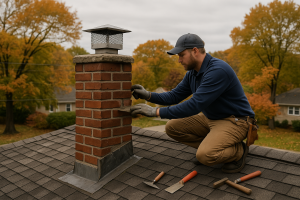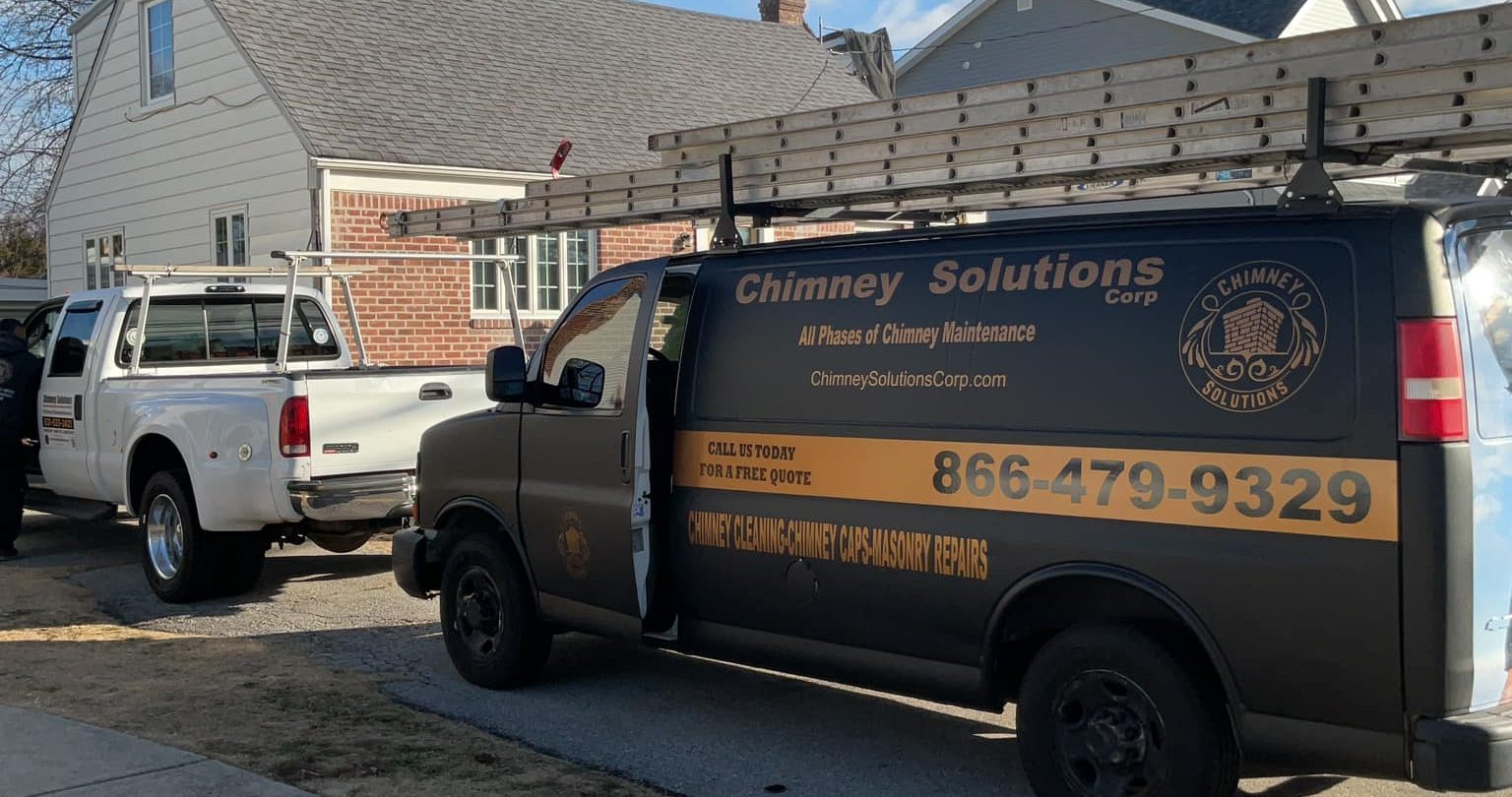A clean chimney is essential for safe, efficient operation and long-term protection of your home. Routine chimney cleaning not only helps maintain optimal performance of your wood-burning fireplace or gas furnace but also prevents hazardous issues such as creosote buildup, structural damage, and even chimney fires. In this guide, we’ll explore the importance of regular chimney cleaning, how to recognize when your chimney needs attention, professional cleaning, and ongoing maintenance strategies—all designed to help you achieve a cleaner, safer chimney.
The Importance of Regular Chimney Cleaning
Regular chimney cleaning is a critical aspect of chimney maintenance that protects your chimney structure and ensures proper ventilation. Over time, the accumulation of creosote—a flammable byproduct of wood combustion—can lead to dangerous conditions, including chimney fires and carbon monoxide leaks. Maintaining a clean chimney helps prevent these potential hazards by:
- Preventing Creosote Buildup: Regular cleaning removes the heavy creosote buildup that can form inside the chimney flue and smoke chamber, reducing the risk of fire.
- Maintaining Efficient Proper Airflow: A clean chimney ensures proper ventilation, which is essential for the efficient operation of heating systems and for preventing incomplete combustion.
- Protecting Structural Integrity: Routine maintenance addresses minor issues before they evolve into structural problems, safeguarding the chimney walls, crowns, and overall chimney structure.
For further details on safety standards, check out the National Fire Protection Association (NFPA) guidelines.
Recognizing the Signs Your Chimney Needs Cleaning
Identifying early signs that your chimney needs attention is key to preventing costly repairs and ensuring safe operation. Homeowners should watch for:
- Visible Creosote Accumulation: Look for a dark, tar-like substance on the chimney walls and flue. Excessive creosote buildup is a clear indicator of a dirty chimney.
- Unpleasant Odors or Excessive Smoke: A strong, campfire-like odor or excessive smoke entering the home can signal ventilation issues or a blocked chimney.
- Structural Issues: Cracks in the chimney crown, damaged chimney caps, or visible signs of water leaks and structural damage warrant an immediate inspection.
- Poor Draft Performance: If you notice cold drafts or improper airflow, it may be due to a clogged chimney flue or animal blockages.
Regular inspections can help you spot these potential issues early and maintain a well-maintained chimney.
Understanding Chimney Inspections vs. Cleanings
While both inspections and cleaning are vital, they serve different purposes in chimney maintenance:
- Chimney Inspection: This is a comprehensive evaluation of your chimney’s condition, including its chimney liner, smoke shelf, and overall structure. Annual chimney inspections by a professional chimney sweep can uncover hidden issues such as creosote buildup, animal nests, or water damage.
- Chimney Cleaning: This process involves the physical removal of soot, creosote, and other debris using specialized brushes (e.g., a Chimney Brush or bristled poly brush) and cleaning tools. Regular cleaning ensures that the chimney flue and smoke chamber remain clear for proper combustion and ventilation.
For more insights, visit the Chimney Safety Institute of America (CSIA).
When to Schedule Routine Chimney Cleanings
The frequency of chimney cleaning depends on several factors, including the type of fireplace, fuel types used, and usage patterns. As a general rule:
- Wood-Burning Fireplaces: Should be cleaned at least once a year or more frequently if you use unseasoned wood, which produces more creosote.
- Gas or Oil Appliances: These may require less frequent cleaning but still benefit from annual inspections to ensure proper ventilation.
- After Heavy Use: If you experience heavy usage during the colder months, schedule an extra cleaning to remove any excessive creosote buildup.
- Following an Annual Inspection: Professional chimney inspections often reveal if your chimney is approaching dangerous levels of buildup or if there are signs of potential safety hazards.
Regular chimney cleaning is an investment that minimizes the risk of costly repairs and ensures efficient chimney operation.
Safety Precautions for Chimney Cleaning
Chimney cleaning can expose you to several potential hazards, so taking safety precautions is essential:
- Wear Protective Gear: Always use safety glasses, gloves, and a dust mask to prevent exposure to harmful substances and creosote.
- Ensure Proper Ladder Safety: When entering the roof access, use a sturdy ladder and have someone assist you if possible.
- Avoid Cleaning During Cold Winter Months: Cold temperatures can make materials brittle and increase the risk of accidents. Plan your cleaning during milder weather if possible.
- Know When to Call a Professional: If you encounter signs of structural damage, excessive creosote buildup, or ventilation issues, it’s best to hire a professional chimney sweep for a comprehensive cleaning.
Following these precautions helps create a safe environment while ensuring effective chimney cleaning.
Benefits of Hiring a Professional Chimney Sweep
While DIY cleaning methods can be effective for routine maintenance, hiring a professional chimney sweep offers several advantages:
- Comprehensive Inspection: Professionals conduct a thorough chimney inspection to identify potential issues, such as water damage, animal nests, or hidden structural problems.
- Specialized Equipment: A professional service uses advanced tools and specialized brushes to achieve a cleaner chimney than DIY methods might allow.
- Adherence to Safety Standards: Expert chimney technicians follow strict safety protocols and ensure your chimney meets building codes and NFPA standards.
- Timely Repairs: Professionals can immediately address minor repairs, preventing them from escalating into costly repairs or extensive damage.
- Peace of Mind: Knowing that your chimney is maintained by certified experts offers peace of mind, ensuring optimal performance and safe operation.
For more information on professional chimney cleaning, visit reputable organizations like the National Chimney Sweep Guild (NCSG).
Conclusion: A Proactive Approach to Chimney Care
Routine chimney cleaning is a crucial aspect of home maintenance that offers long-term benefits for safety, efficiency, and cost savings. Whether you choose to perform regular cleaning yourself or hire a professional chimney sweep, maintaining a clean chimney ensures proper ventilation, minimizes the risk of chimney fires, and prevents structural damage.
For homeowners, investing in regular chimney maintenance means:
- Reducing the risk of creosote buildup and potential fire hazards.
- Maintaining efficient airflow and optimal heating performance.
- Protecting your chimney structure and overall property value.
By following the guidelines in this comprehensive guide and adhering to recommended maintenance schedules, you can enjoy peace of mind knowing your chimney is well-maintained and safe for years to come.
For further details on chimney safety standards and maintenance best practices, consider visiting CSIA or NFPA. Embrace a proactive approach to chimney care and ensure your home remains a safe, comfortable haven throughout the year.
This homeowner’s guide to routine chimney cleaning provides you with the essential steps, safety precautions, and professional insights needed to keep your chimney in optimal condition. With regular maintenance and timely repairs, you’ll protect your home from costly repairs and potential hazards, ensuring a cleaner, safer, and more efficient fireplace for every season.



